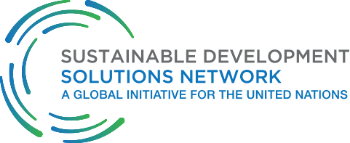Research
The Mulloon Institute’s research is focussed on creating more resilient, productive and profitable landscapes where agriculture and the environment are working in unison to combat the impact of changing climatic conditions.
Its research methodologies take a multi-dimensional integrated research approach with three key elements:
Environmental impact of rehydrating landscapes
Economic impact of landscape rehydration on landholders, community and the nation
Social impact of landscape rehydration on community members.
TMI has been recognised internationally for its ground-breaking research, particularly in the areas of landscape rehydration and restoration.
In 2016, our world-class research methods and integrated science on the Mulloon Rehydration Initiative, was recognised by the United Nations when it was selected as one of just five model case study projects globally to help develop guidelines for sustainable but profitable and productive farming.
Scientific baseline surveys were conducted prior to the Mulloon Rehydration Initiative being implemented to monitor the project’s impact on Mulloon Creek and the surrounding catchment. Ongoing monitoring is also being conducted during the project to monitor changes.
The Mulloon Institute is one of five organisations globally to have been selected by the United Nations Solutions Network as a demonstrator of regenerative agriculture land management practices.


University Partners
We partner with globally recognised universities who are leaders in agricultural research, regenerative land management practices and innovation.
TMI’s scientists, hydrologists and researchers work with farmers and other stakeholders on leading edge local and catchment scale rehydration and restoration projects across the country and are supported by members of our Science Advisory Council.
Our scientists are continually refining their research on the Institute’s two working properties located at Mulloon Creek Natural Farms. Here the Institute actively researches and demonstrates various regenerative agriculture methods, undertakes trials, implements on-ground landscape rehydration works, and regularly shares our learnings with farmers and the broader public. We are also increasingly looking to our Indigenous culture in Australia that managed the land and survived from it for thousands of years.
Read more about our Education programs.
Mulloon Rehydration Initiative Partners
What We Do
Our research prioritises improvements to:
Water
We are rehydrating our landscapes by reconnecting them to our rivers and streams and returning landscapes to as close as possible to their original state. Rehydration techniques bank water in the floodplain - under, not over the land. We all benefit from greater availability of naturally filtered, clean water when we need it. This has a significant positive knock-on effect to the health and balance of the ecosystems correcting salinity and creating landscapes more resilient to drought, floods and bushfires.
REVEGETATION
We are reforesting and recovering landscapes using appropriate shrub and tree species and measuring the impact. Sophisticated drone technology and aerial mapping helps us to conduct vegetation surveys. We also provide grazing and cropping advice to land managers.
SOILS
Healthy soils are the foundation of life. We support best practice farming techniques that build soil, rather than deplete it. Grazing management and natural rehydration help to build organic carbon and soil quality.
BIODIVERSITY
Providing diverse and complex vegetation systems helps to create critical wildlife corridors for endangered wildlife and nationally listed threatened species.
SOCIETY
Through social surveys, regular workshops and field days, we engage in two-way discussions with participants and equip farmers and land managers with the knowledge and tools they need to manage their land and water resources sustainably, productively and profitably.
ECONOMICS
The Mulloon Institute is integrating these three elements of landscape repair techniques to develop a landscape repair simulation tool, which delivers important feedback loops and can be used as a planning tool for the roll-out of future landscape scale projects. This tool will measure and demonstrate:
- Return on investment for landholders;
- Value of ecosystem services provided for greater community;
- Value of natural capital created for Australia.
PUBLICATIONS & JOURNALS
This list of landscape rehydration publications and journals for further reading is reproduced directly from our ‘Landscape Rehydration: Theory & Practice’ manual. CLICK HERE














